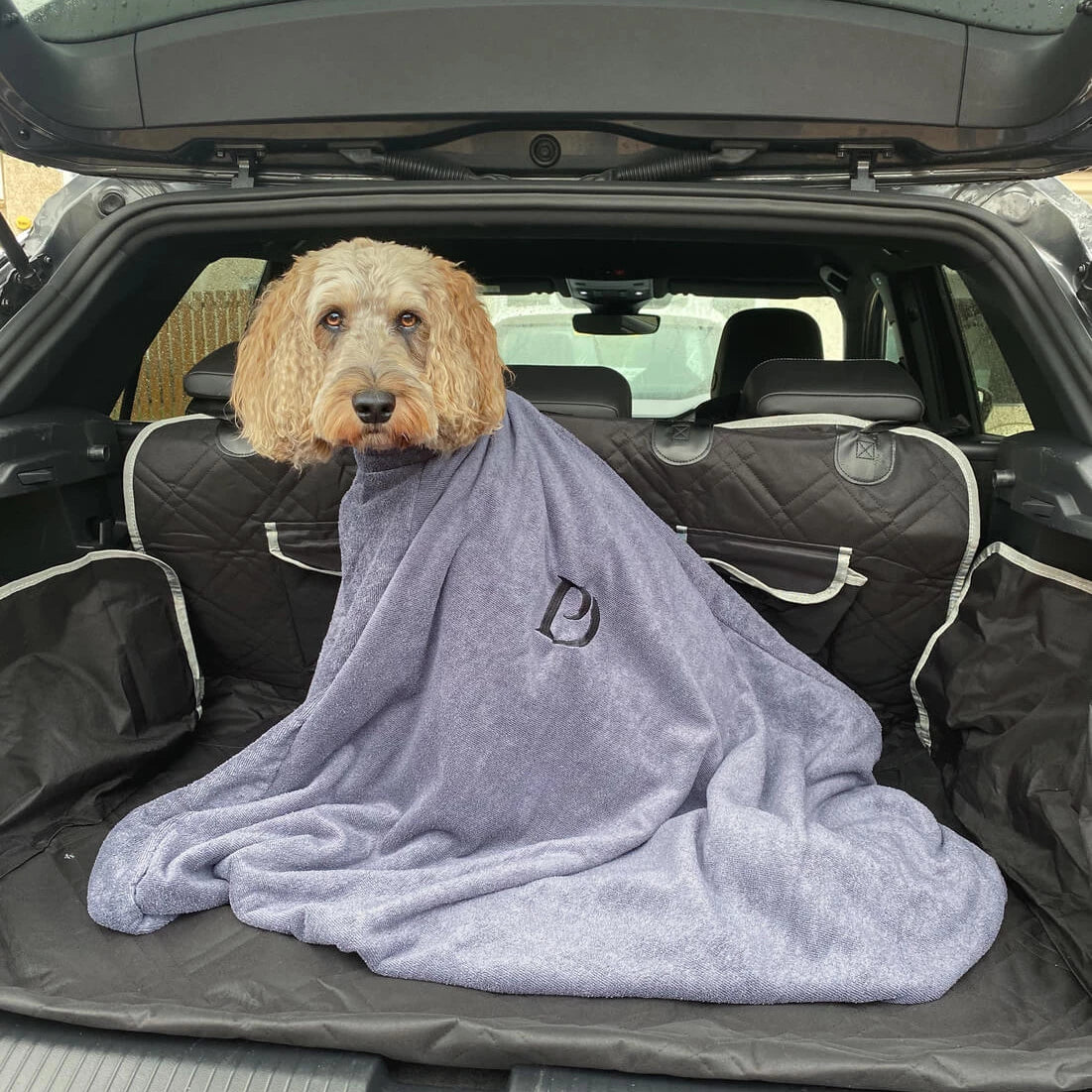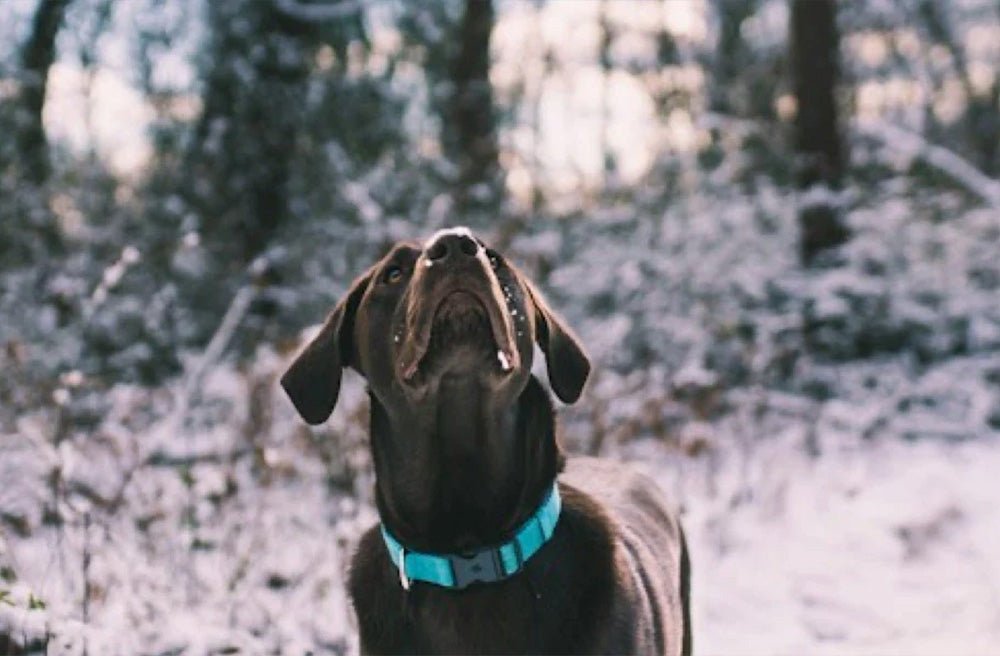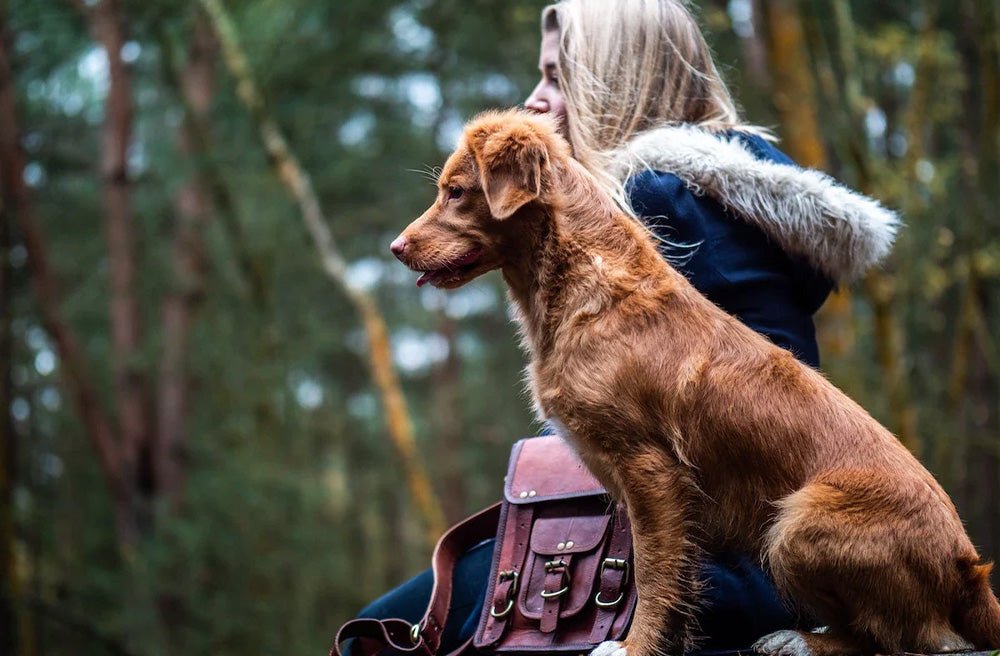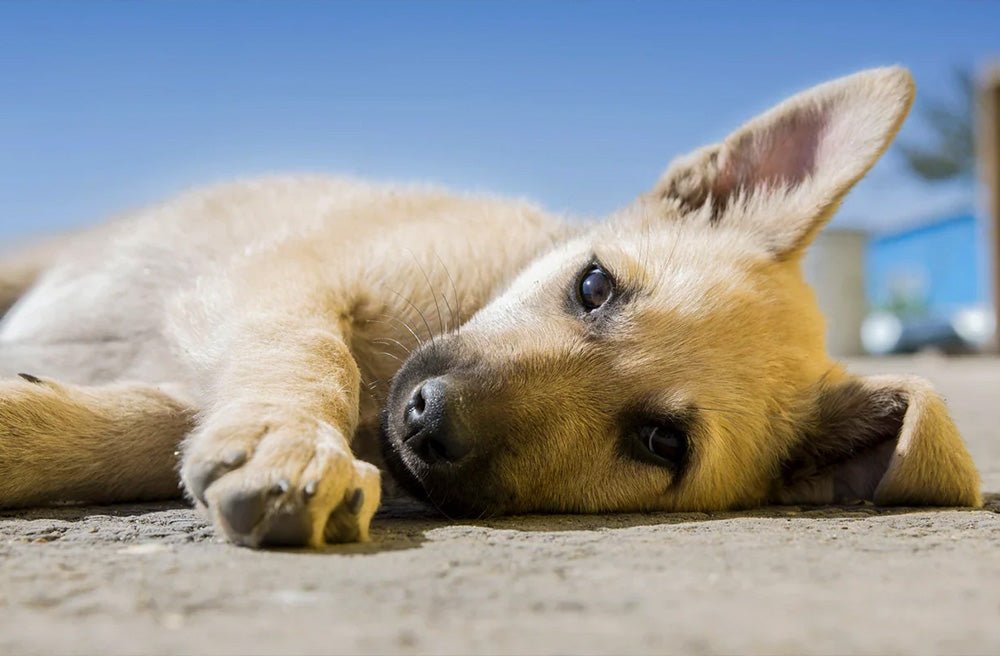As we all dream of a white Christmas, dog owners eagerly anticipate snowy walks with their pups. However, ensuring a safe and enjoyable experience requires careful preparation.
Here are some things to consider before embarking on a snowy adventure with your beloved pup.
Choose Appropriate Winter Gear
For Your Dog:
-
Dog Coats and Sweaters
Invest in a high-quality dog coat or jumper to keep your furry friend warm during chilly walks. Breeds with shorter fur, elderly dogs, or those with health conditions benefit significantly from the added warmth.
-
Protective Paw Gear
Dog booties serve a dual purpose—they shield your dog's paws from cold surfaces and protect them from harmful substances like road salt.
Ensure the booties fit well and allow your dog to walk comfortably.
Not all dogs will enjoy wearing boots and they may need to be introduced slowly. Alternatively, invest in a Natural Paw Balm to sooth delicate feet.
-
A Cosy Drying Bag for after cold walks
After your pup has had their fun frolicking in the snow, the perfect way to reward them is with a cosy warm-up in their Dog Drying Bag. Not only will it remove any snow and debris from the walk, it will dry off melted snow and keep them warm and snug in the process.
For the Dog Walker:
-
Decent Footwear
If you’re going out for a stomp in the snow, it’s essential to wear waterproof and insulated boots to keep your feet warm and dry - at least if you want to enjoy yourself! Cold, wet feet can turn you into the Christmas Grinch and even lead to health issues. Choose boots with good traction to navigate snowy and potentially slippery paths.
-
Layered Clothing
Another valuable tip for our fellow dog walkers is to dress in layers. Opt for moisture-wicking base layers, insulating mid-layers, and a waterproof outer layer to stay warm and dry in various weather conditions. Layering your clothing allows you to moderate your temperature throughout your walk depending on the level of exercise and the outside temperature.
-
Protective Gloves
Don't forget gloves to shield your hands from the biting cold! A decent pair of waterproof gloves will not only keep you warm but also ensure your hands remain functional for lead control and poo bag handling.

Safe Practices During Snowy Walks
Adjust Walking Times
With shorter days in winter, where possible try to plan your walks during daylight hours to ensure visibility and safety. If walking at night, make sure that both you and your dog are wearing reflecting clothing. Read more expert tips for walking in the dark here →
Try to select walking routes that are dog-friendly and safe during winter. Parks and open spaces that are well-maintained are ideal for snowy strolls.
Check for Ice and Salt
Be mindful of icy patches on pavements and roads, and avoid them when possible.
Make it a habit to check your dog's paws for signs of injury or irritation. Ice, snow, and road salt can cause discomfort, so prompt attention to their paws is essential. After walks, wipe your dog's paws with a soft towel to remove any harmful salt residues from the walk.
Use a Natural Paw Balm to sooth cold or chapped paws after snowy or icy walks.
Keep Your Dog on the Lead
Snow can alter scents and make it easier for dogs to lose their way. Keep your dog on a lead to ensure their safety and prevent them from running into hazardous areas.
Monitor Behaviour
Watch for signs of discomfort or distress in your dog, such as shivering or lifting their paws. If your dog seems uncomfortable, it's time to head back home and warm up.
Make sure your dog has a GPS tracker
During winter walks, it's important to have a GPS tracker on your dog for several reasons. Snow, ice, and low visibility can make it harder to keep track of your dog, especially if they wander off or become disoriented in unfamiliar or snowy environments. A GPS tracker allows you to locate your dog quickly if they get lost, preventing extended searches in harsh conditions. Additionally, winter weather can make outdoor environments more dangerous, with icy patches or deep snow that might cause your dog to get stuck or injured, so knowing their location can help you act fast. The tracker provides peace of mind, ensuring you can always find your dog, even if they run into trouble or become separated during a walk.
Don't forget about the poo-bags
It's important to carry poo bags during winter walks because, despite colder weather, your dog still needs to relieve themselves. Cleaning up after your dog helps maintain a clean environment, preventing the spread of germs and parasites, which can thrive even in the winter. Snow and ice can make it harder for others to spot waste, so picking it up ensures public spaces stay clean and safe for everyone. It also prevents waste from freezing to the ground, which could make it harder to pick up later. Finally, being responsible with waste disposal shows respect for the community and the environment, no matter the season.
Don't let your dog enter frozen water
It's important not to let your dog enter frozen water because thin ice can break easily, posing a drowning risk. Dogs may also struggle to escape or get hypothermic, leading to severe health risks or injury.
Remember Hydration
While it's cold outside, hydration is still essential. Carry a small water bottle and a collapsible bowl for your dog to stay hydrated during your snowy adventures as any usual drinking spots may be frozen over in the cold weather.
Winter Grooming
Maintain your dog's grooming routine, ensuring their fur doesn't become matted with snow and ice. Trimming the hair between their paw pads can prevent ice build-up. The Clean & Pamper Gift Set contains everything you need for a nourishing winter grooming session.

Understanding Your Dog's Limits
Breed Considerations
Different dog breeds have varying tolerance levels for cold weather. While some breeds thrive in the snow, others, such as short-haired breeds, may need extra protection. It’s important to know your dog's breed characteristics and adjust accordingly.
Senior Dogs
Older dogs may have more difficulty regulating their body temperature. Monitor them closely for signs of discomfort, and consider shorter walks to prevent over-exertion.
Senior dogs may be more sensitive to the cold and have difficulty regulating their temperature. Consider shorter walks and provide extra insulation when outdoors. Monitor them closely and turn back home at the first sign of unease.
Gradual Adaptation
If your dog is not accustomed to snowy conditions, it can be beneficial to introduce them gradually. Start with shorter walks and monitor their response. Positive reinforcement, treats, and praise can help create a positive association with snowy outings and make them feel more comfortable in the unfamiliar conditions.

F&Q
At what temperature is it too cold for dogs?
Generally, temperatures below 32°F (0°C) can be too cold for dogs, especially small, short-haired, or senior dogs. If it's below 20°F (-6°C), it's risky, and dogs should stay indoors for safety.
How do I know if my dog is cold?
Signs your dog is cold include shivering, lifting paws off the ground, curling up, whining, or seeking warmth. Dogs may also slow down, look for shelter, or have a hunched posture when feeling cold.
Conclusion
Walking your dog in the snow in the UK can be a fun experience with the right preparation. By choosing the appropriate winter gear, understanding your dog's limits, and practicing safe habits, you can ensure both you and your dog enjoy the magic of a snowy stroll while staying safe and protected.











